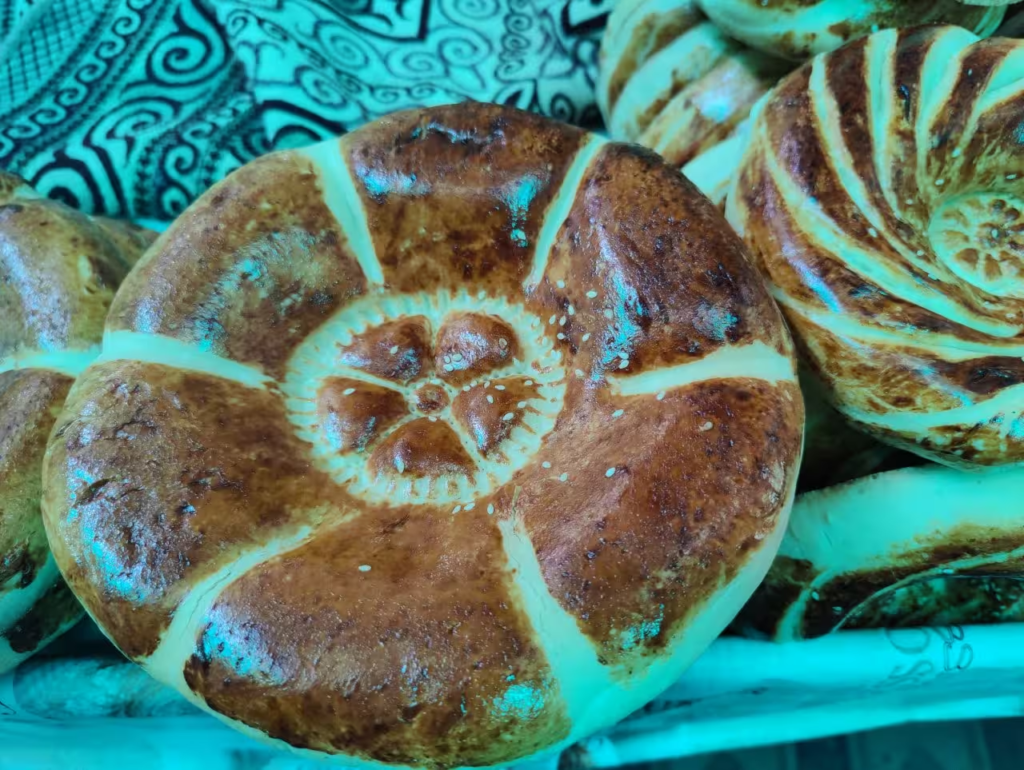Kazakh cuisine is a tapestry of flavours and cultural influences from neighbouring nations like Iran, Uzbekistan, Azerbaijan and Russia. It’s also got spices from abroad, thanks to being on the Silk Route.
If you want to understand a city, go to its larder – one of the first places that I visit in Almaty, the largest city in Kazakhstan, a land-locked country in Central Asia, is the Green Bazaar, the city’s main market, and a Soviet era remnant. The high-ceilinged hall is filled with sections and aisles selling fruits, vegetables, dairy, meats and cheeses. Friendly shopkeepers call out to us to taste Tajik dried fruits and nuts, Georgian sweets, tea blends, and hard balls of local kurt cheese.

My guide Victoria tells me that the Kazakhs were nomadic tribes in the past and they had to. produce food that was portable and long-lasting. They soured milk and dried meat to preserve it. A nomadic lifestyle made it hard to grow crops, so they depended on meat. Kazakh cuisine today is a tapestry of flavours and cultural influences from neighbouring countries like Uzbekistan, Azerbaijan, Russia and Iran. It also got spices from abroad, thanks to being on the famous Silk Route.
Kazakhs, unlike other nomadic people, have always been fond of horse meat and sausages made from its meat as well as sorpa, a creamy dish made with horse meat. The main dish of Kazakh cuisine, with which owners welcome their guests is beshbarmak. The name of this dish is translated from Kazakh as “five fingers” because this is supposed to be eaten using your fingers. Beshbarmak’s main ingredients are: meat – lamb or horse meat and pasta (it is cut into small squares), as well as herbs like cilantro and parsley.
A large part of the Kazakh diet is dairy, thanks to their nomadic past when, it is said, they carried milk in leather saddle bags, and it churned in motion and turned into butter and cheese. Kurt are salty balls of curd left to dry in the sun, that can last for days. These little bombs of calcium would be crumbled into soups, stews and salads and were portable and satiated hunger and thirst in a nomadic life.
Another drink that I try at the Green Bazaar is Kumis– fermented mare’s milk – that is a local favourite. It’s intensely sour, and pungent, but very good for gut health and boosting immunity. Bottles of kumis are sold outside parks and on mountain trails. I also taste Shubat, fermented camels milk, which is made in special leather containers. There’s also ayran, a kind of kefir usually made from goat’s milk.
Aisles of dried fruits are sold by Tajik traders at the market- from sultanas and almonds to dried apricots, figs, walnuts, macadamia and Brazil nuts. There is also a section that sells marinated Korean salad ingredients. I learn that in 1937, Stalin deported hundreds of Koreans from Russia’s far east, and many fled to Kazakh territory and Uzbekistan. They started using local ingredients to make Korean food. In the absence of daikon radish, they made a carrot salad which is famous locally. I have spicy Korean glass noodles with vegetables at dinner at the beautiful Qaimaq Kazakh restaurant, with rooms shaped liked yurts.
It is said that the smell of the oil when you are frying baursak bread floats high into the sky, so that dead loved ones can feed on the aroma and enjoy them, along with you. It’s baursauk that we are welcomed with, at the Hun Ethno Village near Almaty which re-creates the nomadic lifestyle of the past, along with cups of black tea.
Baursak are often eaten as a desert topped with sugar, honey, or jam, and because of this, are sometimes referred to in Kazakhstan as ‘Kazakh donuts’. Baursak is just one of the many breads on offer. ‘Bread is the head of all food’, says a common Kazakh proverb.

In the Green Market in Almaty, I see stalls selling disc-like breads imprinted with designs, flaky naan breads, and round tohax bread with a golden crust and an indentation in the center. Many are sprinkled with sesame, nutmeg, poppy seeds or raisins. There’s also crisp Katama that’s like Malabar Paratha made of refined flour and fat, and shelpek-disks of flour that are dropped in hot oil and fried on both sides until golden.
Most breakfast buffets have a traditional porridge called Talgan that is made from millet or barley flour. Black tea served in small cups without handles is the brew of choice, though the country has a great café culture where you find western brews of coffee and cakes and pastries.
Over the next few days in the country, I find that as a vegetarian, I will not starve in this country. I love a vegetarian version of Laghman, a tasty traditional Uyghur dish of thick, hand-pulled noodles usually served with beef broth, and tomatoes, with spices, that a local recommends I try at the Rixos Hotel in Turkestan. With thick noodles, peppers, eggplant and carrot, mixed together with red pepper and garlic, this is a meal by itself. We even have an Indian Thali with naans, curries, lassi and dal, at the Spice Mantra restaurant in Almaty, packed with Indian students studying here.
I also eat samsas, their version of the samosas, usually stuffed with cheese with fluted edges, and steamed dumplings called manti that are usually stuffed with meat. I also have Plov (or palau) the Central Asian version of pilaf, where the rice is cooked in stock or broth with spices and other ingredients like lamb, onions, and carrots.

The Kazakhs don’t have too many sweets, and quite often just have fruits like slices of watermelon at the end of a meal. But one dessert that I enjoy is chak chak, a dessert originating from Tatarstan (a republic in Russia), made from flour, eggs, butter, milk, and honey. Sticks of flour are deep fried in oil for the special taste.
But the meals that I remember after a long time are the alfresco picnics that I have throughout the country. The Kazakh people are great at picnics and in no time set up tables and chairs and a meal with sandwiches, salads, dried fruits, apples and juice, beside a glacial river or inside a pine forest. Eating a meal in nature, is what stays with me for a long time and reminds me of this country of varied landscapes, from its vast steppes to pristine mountains and deep gorges.
Source : MONEYCONTROL










